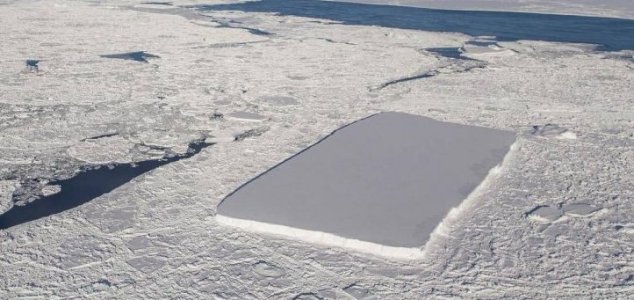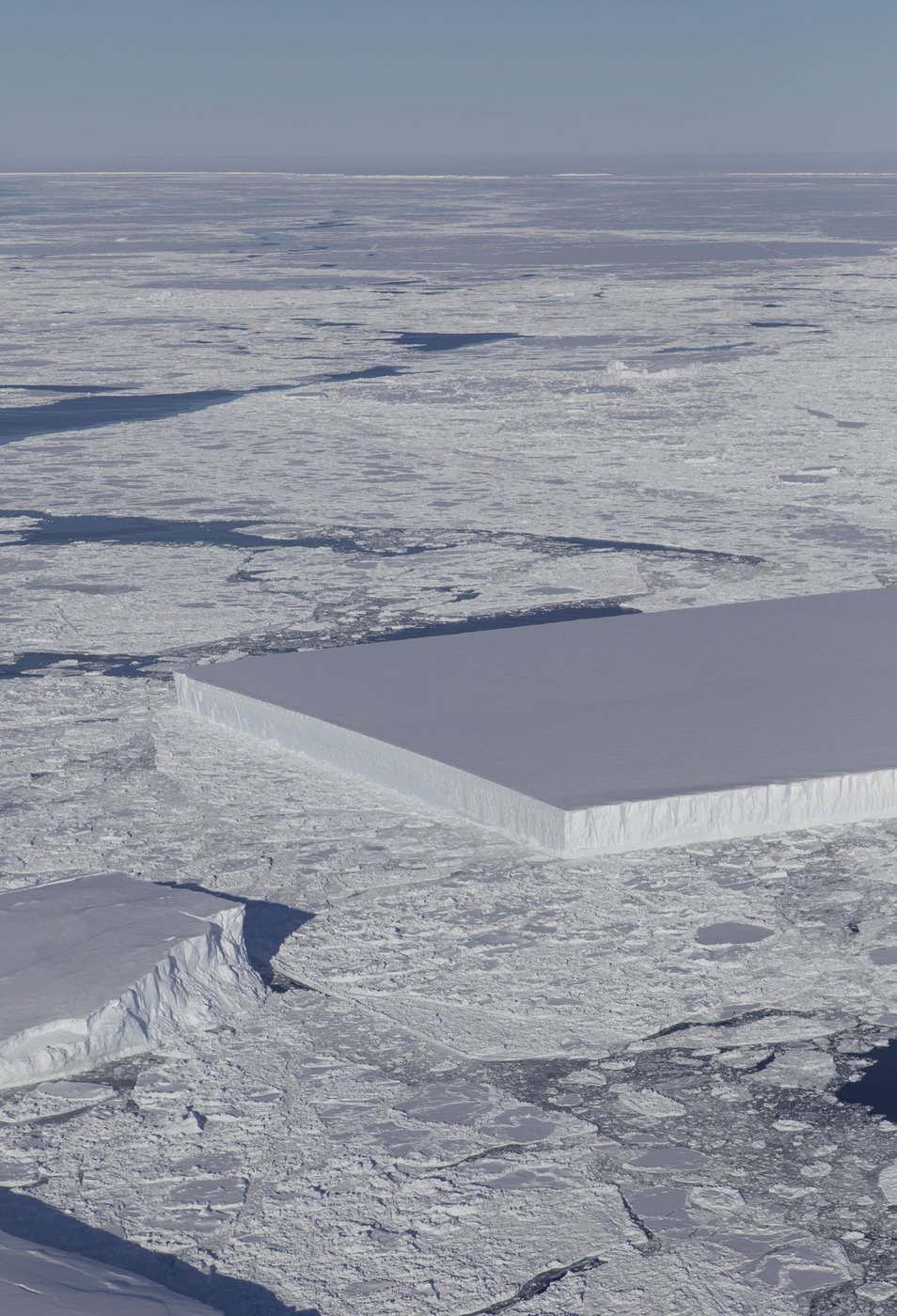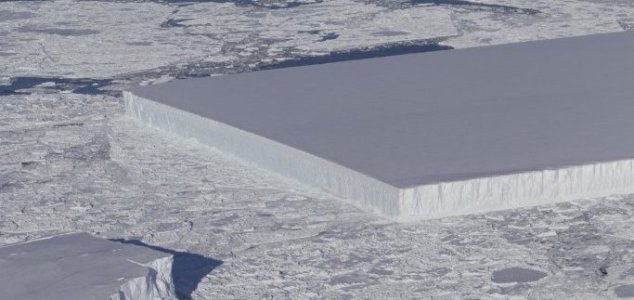NASA’s Perfectly square iceberg breaks Internet
Updated – 2/11/2018
NASA photographs second rectangular iceberg
Icebergs of this type, which are known as tabular icebergs, typically split from the edges of ice sheets through a process that is not dissimilar to a fingernail growing too long and breaking off at the end. A photograph of the previous iceberg can be viewed below.
“I thought it was pretty interesting; I often see icebergs with relatively straight edges, but I’ve not really seen one before with two corners at such right angles like this one had,” said IceBridge senior support scientist Jeremy Harbeck who photographed both icebergs.

Look at that iceberg. It’s beautiful. Perfectly rectangular. An object of near geometric perfection jutting into a polar sea of the usual squiggly, chaotic randomness of the natural world. It calls to mind the monolith from “2001: A Space Odyssey.” But, unlike the monolith from that very weird movie, this iceberg was not deposited on this world by space aliens. Instead, as Kelly Brunt, an ice scientist with NASA and at the University of Maryland, explained, it was likely formed by a process that’s fairly common along the edges of icebergs.

The photograph, which was posted up on Twitter this week, was taken as part of Operation IceBridge – an ongoing airborne NASA mission that aims to monitor changes in the polar ice caps.
Social media users were quick to pick up on the iceberg’s impossibly perfect edges and smooth, featureless surface – a stark contrast to the chaotic shapes and sizes of other icebergs. According to ice scientist Kelly Brunt however, it likely formed through a relatively common process.
“We get two types of icebergs,” she told Live Science. “We get the type that everyone can envision in their head that sank the Titanic, and they look like prisms or triangles at the surface and you know they have a crazy subsurface. And then you have what are called ‘tabular icebergs.'”
The latter can be very flat and geometric and typically split from the edges of ice sheets through a process that is not dissimilar to a fingernail growing too long and breaking off at the end. Despite appearances, the iceberg in the photograph is actually several miles across and most of it is submerged under the water. The part you can’t see is likely to be shaped much like a regular iceberg.
Tabular icebergs form, she said, through a process that’s a bit like a fingernail growing too long and cracking off at the end. They’re often rectangular and geometric as a result, she added.
“What makes this one a bit unusual is that it looks almost like a square,” Brunt said.
It’s difficult to tell the size of the iceberg in this photo, she said, but it’s likely more than a mile across. And, as with all icebergs, the part visible above the surface is just the top 10 percent of its mass. The rest, Brunt said, is hidden underwater. In the case of tabular icebergs, she said, that subsurface mass is usually regular-looking and geometric, similar to what’s visible above. This iceberg looks pretty fresh, she said — its sharp corners indicate that wind and waves haven’t had much time to break it down. But despite the berg’s large mass, Brunt said, she wouldn’t advise going on a walk on its surface.
“It probably wouldn’t flip over,” she said.
The thing is still much wider than it is deep, after all. But it’s small enough to be unstable and crack up at any moment.



